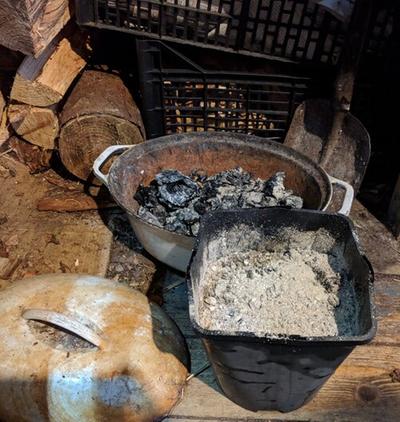
 14
14






 8
8





- Tim's Homestead Journal - Purchase a copy of Building a Better World in Your Backyard - Purchase 6 Decks of Permaculture Cards -
- Purchase 12x Decks of Permaculture Cards - Purchase a copy of the SKIP Book - Purchase 12x copies of Building a Better World in your Backyard
 3
3




Invasive plants are Earth's way of insisting we notice her medicines. Stephen Herrod Buhner
Everyone learns what works by learning what doesn't work. Stephen Herrod Buhner
 5
5




 6
6




Anne Miller wrote:What is the difference between wood ash and biochar?
Is it that wood ash is a byproduct of some other application?
Or that wood ash is powdery and biochar is chunk like charcoal?
When added to soil does it make a difference?







 5
5




Alexandra Malecki wrote:wow, thanks for creating this! I also have wonderings about how much of the remaining coals are considered biochar. I think I need to do more research.
 8
8




 7
7




 6
6




 4
4




Phil Stevens wrote:Ash tends to be powdery because all the structures that held it in place are gone. In a really hot fire it sinters and forms slag and clinkers. These are the chunky bits that are hard to grind, and are a bit like volcanic glass.
Become extra-civilized!
 4
4




Air and opportunity are all that stand between you and realizing your dreams!







 3
3




Coydon Wallham wrote:
I ocassionally pull stuff out of my RMH that are dense and chunky, but they have the consistency more of sandstone (or something friable) than glass. Is that simply ash?
What are some uses for slags and/or clinkers?
 7
7




Tommy Bolin wrote:Finns clean the glass of their woodstoves with ash. According to my Finnish mother.
 8
8




Do, there is no try --- Yoda
No one is interested in something you didn't do--- Gord Downie

|
Those cherries would go best on cherry cheesecake. Don't put those cherries on this tiny ad:
Freaky Cheap Heat - 2 hour movie - HD streaming
https://permies.com/wiki/238453/Freaky-Cheap-Heat-hour-movie
|


